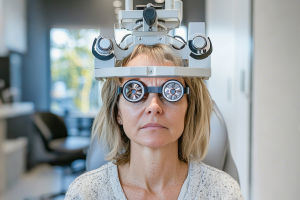Somatic symptoms refer to physical complaints like pain, fatigue, or gastrointestinal distress that often accompany psychological distress.
When anxiety focuses excessively on these body sensations, it can evolve into medical anxiety, complicating diagnosis and treatment.
The Nature of Somatic Symptoms in Anxiety
Somatic symptoms are physical manifestations that may arise from genuine medical conditions but also frequently result from psychological factors. In the context of anxiety, these symptoms represent the body's response to stress and heightened arousal, often activating the autonomic nervous system. Common physical presentations include muscle tension, rapid heartbeat, gastrointestinal upset, dizziness, and headaches.
Unlike purely cognitive anxiety, where worries and fears dominate mental activity, somatic anxiety centers on the tangible sensations experienced in the body. This physical expression can be unsettling, sometimes mimicking serious illnesses, which fuels further anxiety and perpetuates a feedback loop of distress.
Distinguishing Somatic Symptom Disorder from Somatic Anxiety
While somatic anxiety describes physical symptoms linked to anxiety states, somatic symptom disorder (SSD) is a recognized psychiatric diagnosis characterized by persistent and disproportionate focus on these symptoms. Individuals with SSD experience significant emotional distress and impaired functioning triggered by physical complaints, regardless of the presence or absence of an underlying medical cause.
It is crucial to acknowledge that the symptoms experienced in SSD are real and not fabricated, however, the intensity of concern and related behaviors such as repeated medical visits and health-related preoccupation—exceed typical responses. This distinction guides clinical approaches emphasizing both somatic and psychological care.
How Medical Anxiety Amplifies Somatic Experiences
Medical anxiety intensifies attention toward body sensations, with individuals often interpreting benign physical changes as alarming signs of serious illness. This hypervigilance leads to pronounced symptom awareness and escalates discomfort, even in the absence of pathological findings.
The stress response itself contributes chemical mediators like cortisol and adrenaline that produce or exacerbate physical symptoms, such as muscle aches or gastrointestinal disturbances. Consequently, medical anxiety creates a self-reinforcing cycle that challenges both patients and healthcare providers.
Dr. Robert H. Shmerling states, "Understanding that somatic symptom disorder involves genuine physical sensations rooted in psychological distress is fundamental. Treatment strategies should integrate symptom management with cognitive-behavioral approaches to break the cycle of anxiety and physical complaints."
Supporting this, Dr. Nicole Washington, DO, MPH, emphasizes, "Clinicians must recognize somatic anxiety as the body's language for psychological stress. Careful assessment can prevent unnecessary investigations and foster interventions that address both mind and body."
Therapeutic Approaches and Future Directions
Effective treatment targets both the somatic manifestations and the underlying anxiety. Cognitive-behavioral therapy (CBT) remains the cornerstone, helping patients reframe symptom interpretation and reduce maladaptive health behaviors. Mindfulness practices also show promise in reducing physiological arousal and increasing symptom tolerance.
Somatic symptoms and medical anxiety represent intertwined phenomena where psychological distress manifests physically, often leading to significant impairment. Distinguishing between somatic anxiety and somatic symptom disorder is critical for effective diagnosis and treatment. Recognizing somatic expressions of anxiety as valid and treatable lays the foundation for improved patient well-being amid the complexities of mind-body health.


